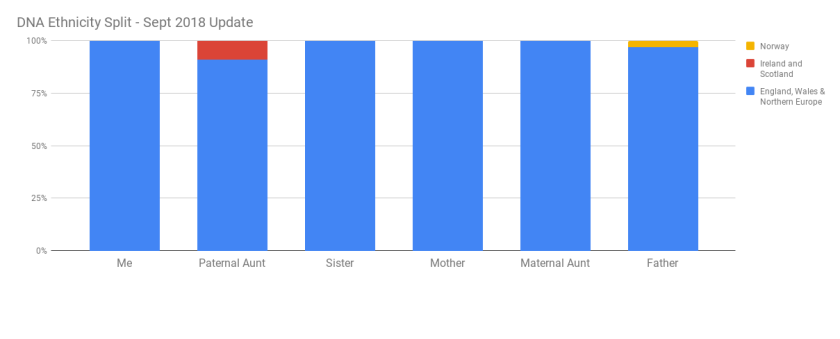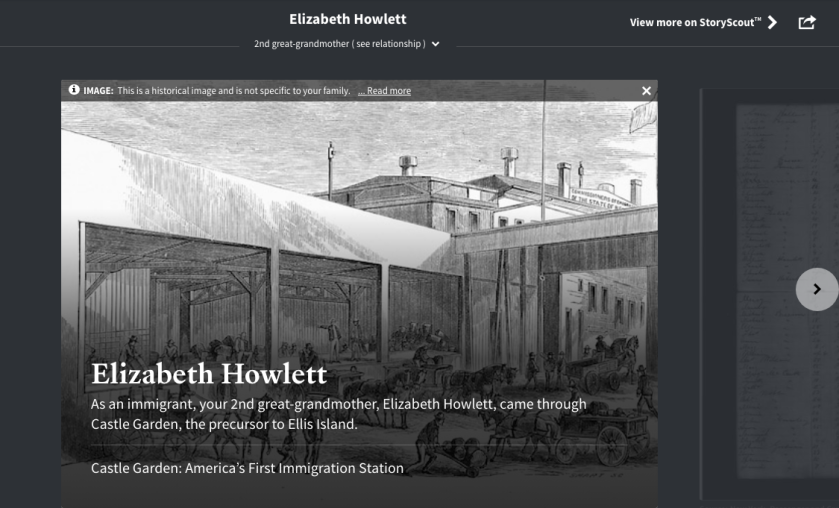Ancestry have updated their DNA results a few times now, and this has changed my ‘ethnicity estimate’ somewhat each time.
Back in 2018, the change resulted in what looked like a really boring set of results for myself and my five testers. I lost all of my more interesting overseas location regions, and became 100% boring.

Despite this ‘boring’ outcome, it actually made it match the documented research much better given that in the research I’ve done – which for some branches covers ~400 years, not one of my ancestors has been born or married outside of England, let alone the UK. Most of those remained in Cambridgeshire and the wider East Anglia (something that Ancestry has highlighted in their results for a while).
The 2019 AncestryDNA update
In August 2019, their next update caused my results to diversify. My other family testers’ results did too, and it appears that the data surrounding Scandinavia was either increased in volume or had been refined.

The Norwegian DNA origins reappeared, and my father’s 4% had shifted into double figures. Meanwhile, my paternal aunt’s Irish DNA vanished in favour of Swedish DNA (my father – her brother) also gained Swedish origins.
Back in 2016-ish, the results looked fairly mixed, but the categorisation of the regions were very broad. It’s only right that as more data comes in, the interpretation of that data gets more accurate.

AncestryDNA 2020 update
With Ancestry’s new announcement in September 2020 that the results are changing ‘soon’, it’s possible to click through and see the changes now.
The change has altered the results significantly, but this is a positive thing.
Some of the regions have been broken down to a more granular level, which allows us to see Scotland and Ireland separately, and Wales extracted from England and Northwestern Europe.

Ancestry have taken to YouTube to announce this update to their DNA data.
It’s always good to get an update on data and accuracy, although Ancestry’s new StoryScout feature very clearly needs some refinement.
Here, my 2x Great Grandmother Elizabeth Howlett, a Suffolk (UK) born daughter of a labourer, who married and lived with her Cambridgeshire (UK) farmer husband, widowed mother, and her many children, is given a fictional story of how she passed through Castle Garden as an immigrant in the USA.

This is complete nonsense. She never left the fenland of Cambridgeshire, and the censuses, baptisms, marriage, banns, and burial records also on Ancestry, alongside my tree, has all the evidence to prove it wrong.
Those family history fans among us who scrutinise less and accept more willingly with a gleeful click, may ultimate find this feature to be a parasite.
Regardless of the changes to your DNA reporting and ethnicity estimates, and the accuracy of the information you see, remember this:
You are still you, and you are the now.
Thanks for reading,
Andrew








